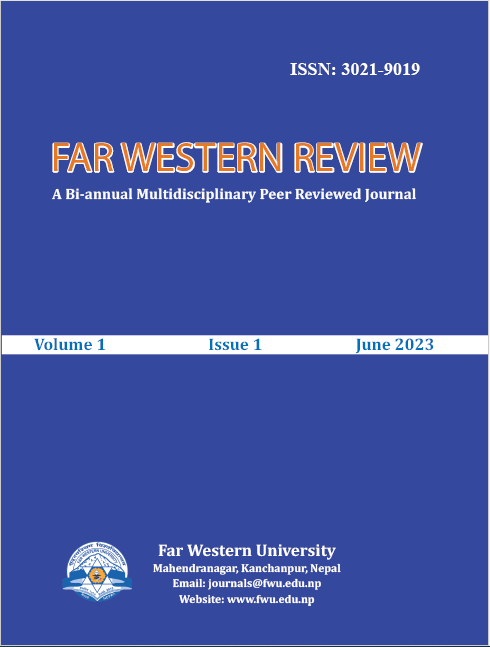Stomatal Variation in Wheat-Thinopyrum elongatum Disomic Addition Lines
DOI:
https://doi.org/10.3126/fwr.v1i1.58276Keywords:
Chinese spring, density, stomata, addition lineAbstract
Stomatal characteristics are inconsistent and greatly influenced by genetics of the plant and environmental conditions. Present study aimed to determine the impact of addition of a pair of chromosomes from Thinopyrum elongatum (2n=14, Genome EE) to common wheat (Triticum aestivum cv. “Chinese Spring”; 2n=42, Genome AABBDD) on stomatal characteristics. Altogether, seven Wheat-Th. elongatum disomic addition lines and a control (Chinese Spring) were used to characterize the density, length, and width of stomata, and the total stomatal area in normal and flag leaves by using leaf impression method. The leaf impressions were made from the middle of the leaves of different wheat lines. The leaves used for impression cast were of the same age. Stomatal density was measured in terms of number of stomata under the field of vision at 400X magnification, while the size (length and width) measurements of individual stomata were done by using ImageJ software. With the exception of flag leaves of 1E disomic addition line, the total stomatal area in leaves of all the lines were significantly lower than that in the control, irrespective of leaf types (normal or flag). These results indicate the potential role of additional chrormosomes of Th. elongatum in stress tolerance in wheat.
Downloads
Downloads
Published
How to Cite
Issue
Section
License
Copyright (c) 2023 Homnath Khatiwada, Deepak Raj Pant, Giri Prasad Joshi

This work is licensed under a Creative Commons Attribution-NonCommercial 4.0 International License.
CC BY-NC: This license allows reusers to distribute, remix, adapt, and build upon the material in any medium or format for noncommercial purposes only, and only so long as attribution is given to the creator.




